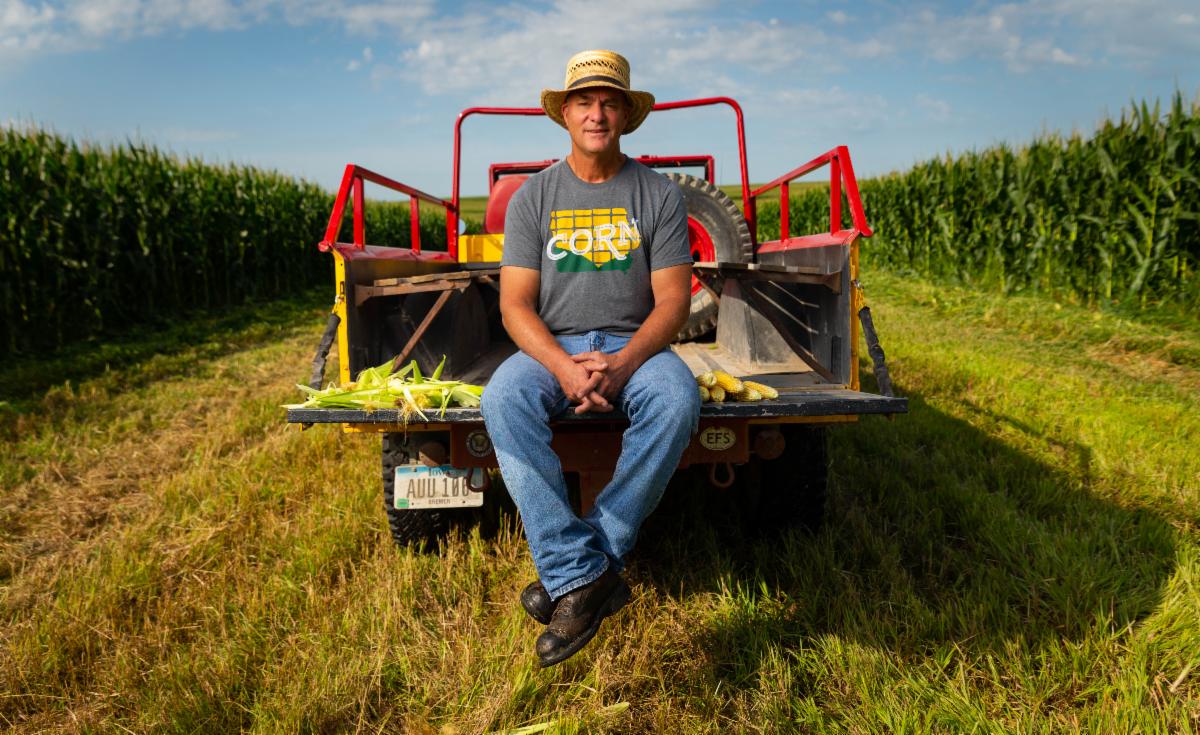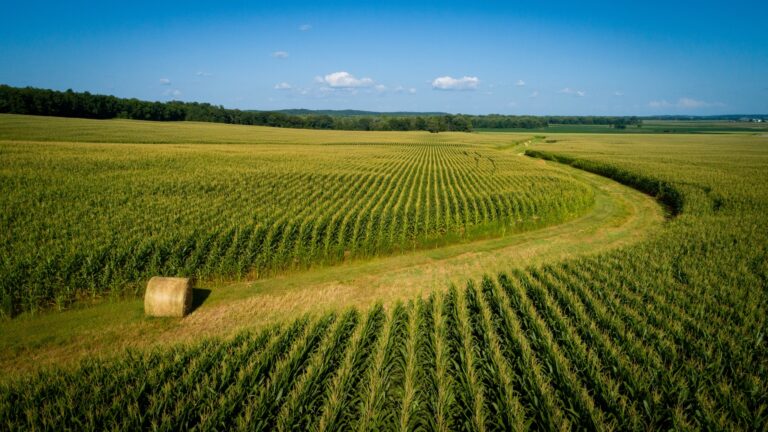2023 July Stewardship Advocate
Practices that improve water quality and soil health in Iowa
Ever feel overwhelmed by the options and don’t know where to start? In this edition of Stewardship Advocate, we look at several practices that can be employed across Iowa to improve water quality and soil health. Many factors go into the decision about what practices fit best, given the topography, location and operation. Each operation has a unique set of circumstances to consider when deciding to adopt new practices.
- Cover crops consist of seed planted that grows in the fall and spring to protect the soil from erosion and improve water infiltration, whether it is from snowmelt or rainfall. Both grasses and legumes are used as cover crops, but cereal rye is the most common species planted in Iowa. Cover crops have been shown to reduce nitrate and phosphorus by more than 30%. Find out more about cover crops here.
- No-till/strip-till systems have many benefits for both soil health and water quality. These tillage approaches create better water infiltration and less runoff allowing the rainfall to soak into the soil and be used by the crop. No-till improves soil health by increasing organic matter, reducing erosion, and enhancing microbial activity in the soil. No-till can reduce phosphorus losses by more than 75% due to the significant reduction of erosion in no-till fields. Learn more about no-till here.
- Nutrient management involves the four “Rs” of nutrient stewardship and includes applying the Right source of nutrients at the Right Rate, Right time and Right place. Utilizing the 4Rs ensures that the crop will be able to maximize uptake of nutrients while minimizing the losses to the environment. Sound nutrient management practices can optimize the fertilizer investment while feeding the crop what it needs and when it is needed.
- Saturated buffers and Bioreactors are edge of field practices that treat tile water before it enters the drainage ditch or stream. Both practices use water control structures to divert tile water laterally through the vegetative root zone in a saturated buffer and through wood chips in a bioreactor. Saturated buffers and bioreactors can remove 50% of the nitrate in water flowing through the structures.
There are many options and programs available to improve soil health on your farm. We recommend you start small, talk to your neighbors and other trusted sources about what works best in your area. Other practices that improve water quality and soil health can be found here. Many of the conservation practices available to Iowa farmers are eligible for cost-share and technical assistance programs from the Iowa Natural Resources Conservation Service (NRCS) at NRCS Cost-Share and Iowa Department of Agriculture and Land Stewardship at IDALS Cost-Share. To get started with a cost-share program, contact your county NRCS office at Iowa NRCS County Contacts.
FARMER TO FARMER: Mark Mueller

Mark Mueller farms near Waverly, Iowa and is a leader in using conservation practices to preserve the soil and improve water quality on his farm. He has been farming with his family since 1995 where they raise corn, soybeans and specialty crops for national and international customers. In 2006, Mark established a business relationship with a new dairy and raises alfalfa and corn silage for the dairy. They utilize the organic fertilizer generated by the dairy’s cows on their cropland.
Preserving Soil: “I started using cover crops and no-till practices in 2006. That was the first year that we had a new dairy harvest silage from our farm. Within days of the silage harvest, we had a 3-inch rain pound the now-bare ground and I watched some of my best soil wash off the farm. Since then, I resolved to seed a cover crop immediately after harvesting the corn, soy or silage in any of my fields. I knew that we’d have to be proactive to preserve our soil, so we started no-till farming. No-till fields will never win a beauty contest, but my consolation prize is spending a lot less money for slightly fewer bushels. After all, do I want more bushels per acre or more dollars per acre?”
Cleaner Water: “I started using cereal rye cover crops and no-till practices to accomplish several things, chief among them, to make my farm more profitable. But the tangible side benefits to my land are that the soil and water stay on my farm. Last year, with state and federal money, I had a 12-acre wetland built on ground I could not farm anyway. This wetland drains almost 400 acres of land planted to corn and soybeans. I feel good knowing that these acres drain into my wetland where the tile water will be cleaned by microbes and vegetation.”
Dual Benefits of Soil Health Water Quality: “I was among the first to sign up for the Soil Health Partnership 10 years ago. The goal was to put a dollar value on the value of cover crops and various farm practices. Everyone can immediately see the costs of growing a cover crop: the price of seed, planting it and, later, terminating it if it overwinters. But what I saw was less run-off from rain since the soil structure is more permeable and the organic matter was soaking up the excess water. Also, I don’t see the ditches filled with muddy water heading towards streams and rivers and ending up in the Gulf of Mexico. An added benefit is that I can get fieldwork done sooner after rainstorms because the rainfall has soaked in faster, and I don’t have field ponds to work around”.
Latest Information
Ag Climate Data Collection to be Improved with $300 Million Investment
Secretary Naig Encourages Farmers to Utilize, Update the State’s Free Hay and Straw Directory
Long-term drainage water recycling affects soil health and soil properties
Understand the inherent uncertainty of your phosphorus monitoring strategy
Act Now to Access Conservation Funding Through the Inflation Reduction Act
Most Ag Economists Think It’s Unlikely the 2023 Farm Bill Will Be Passed in 2023
UPCOMING EVENTS:
Iowa Nitrogen Initiative Field Days sponsored by Iowa Corn (10:00 am – 1:00 pm). RSVPs encouraged. Click here.
- August 15 hosted by farmer Tim Burrack – 8124 80th St., Arlington
- August 16 hosted by farmer Kelly Nieuwenhuis – 5910 440th St., Primghar
- August 23 hosted by farmer Dave Schwartz – 1778 Hwy 44, Guthrie Center
- September 6 hosted by Iowa State University – Kluver ISU Research Farm, 1.5 miles west on 210th St from 500th St./Y Ave., Boone County
August 2 (1:00 – 3:00 pm) – Farmer Opportunities for Water Quality in the North Raccoon Watershed – Carroll
August 3 (8:30 am – 1:30 pm) – Conservation Field Day – Ames
August 4 (9:00 am – 2:00 pm) – Iowa Nutrient Reduction Strategy Workshop – Boone
August 10 (9:00 am – 12:00 pm) – Strip-Till Field Day – Renwick
August 22 (9:30 am -3:30 pm) – Optimizing Fertilizer Investments – Ames
August 23 (10:00 am – 1:00 pm) – Pollinators, Prairie Strips and Oxbows: Creating Varied Habitat on a Central Iowa Farm – Traer
August 24 (10:30 am – 12:30 pm) – Establishing and Managing Perennial Vegetation and CRP – Albion
August 28-29 (8:00 am – 6:00 pm and 8:00 am – 1:00 pm) – 2023 Soil and Water Conservation District Commissioners 77th Annual Conference – Ames
